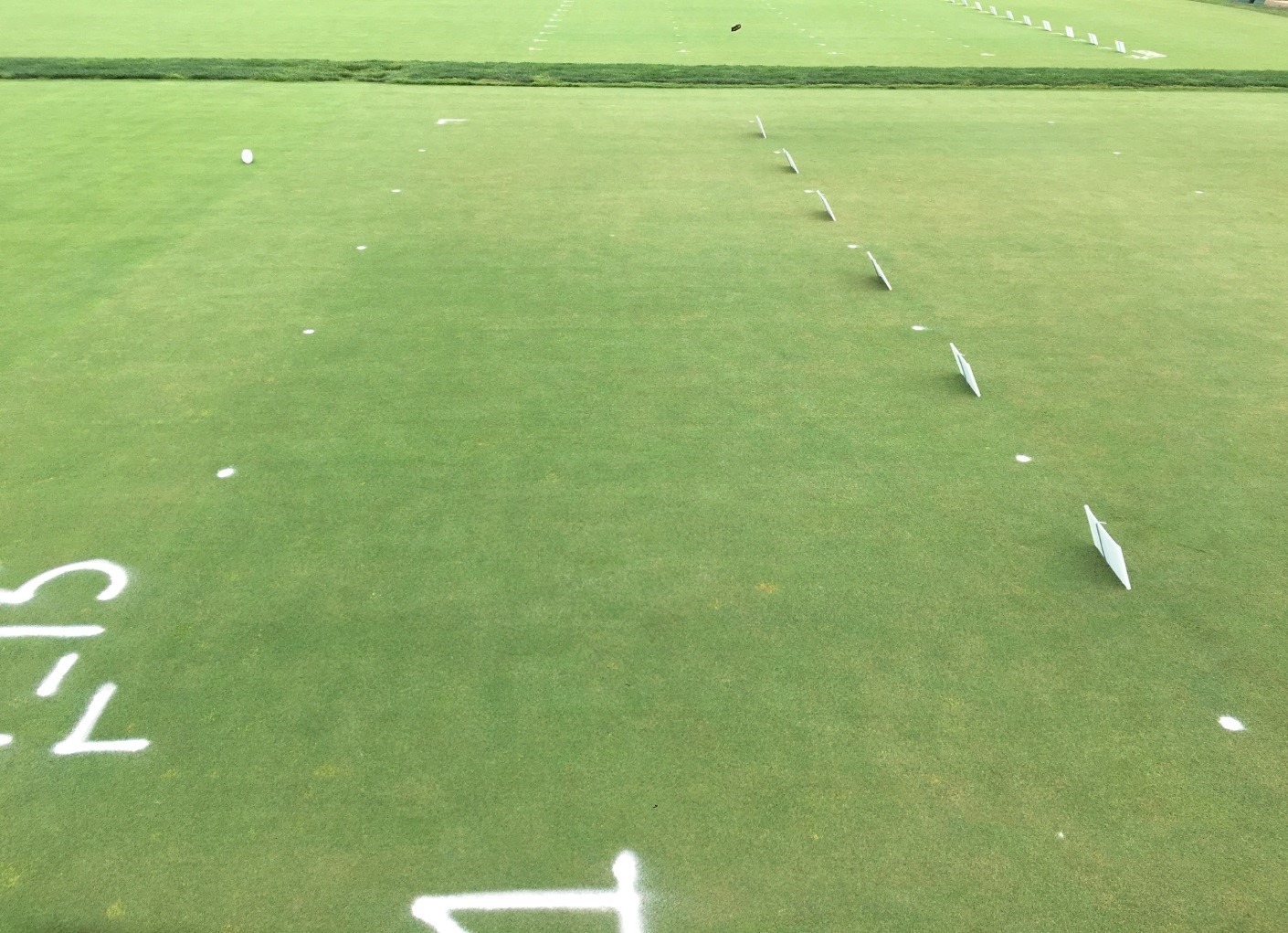Evaluation of Foliar Nutrition to Improve Turfgrass Performance Under Tournament Preparation and Environmental Stress.
Evaluation of Foliar Nutrition to Improve Turfgrass Performance Under Tournament Preparation and Environmental Stress.
DATE: September 2016
PURPOSE: Evaluate the capacity of various liquid fertilizer formulations to provide adequate turfgrass color, quality and vigor under tournament preparation conditions and environmental stress.
SUMMARY: Complete and balanced foliar fertilizers, both GRIGG and Manni-Plex technology, improved turfgrass performance and vigor under abiotic stress compared to nutrient (nitrogen) and untreated control treatments.
GENERAL INFORMATION:
Study Director: Gordon Kauffman III, Ph.D. – BRANDT
Investigator: John Kaminski, Ph.D. – Penn State University
Brandt Rep: John Wiblishauser
Location: Joseph Valentine Turfgrass Research Center, University Park, PA
CROP DETAILS:
Crop/Variety: Penn A-4 creeping bentgrass
PLANTING TYPE, IRRIGATION & SOIL CONDITIONS:
Irrigation Type: NA
Planting Type: NA
General Fertility: 3 lbs. N/M/YR
Soil Type: Sand loam – capped with a 4” layer of USGA sand. Modified with sand.
Plot Size: 5X10 ft
Replications: 4 - Random Complete Block
PEST PRESSURE:
Pest1: NA
Pest2: NA
WEATHER CONDITIONS:
General Weather Cond.: Warm, other abiotic stress
During Application: Variable
*85oF, Dry Conditions, Sunny*
TREATMENT DETAILS:
Crop Stage at App.: Perennial grass cover
Crop Stage at App.:
Site Type: Field Grown
Plot Size: 3X8 ft.
Application Date(s): Every 7 days; June 30 – July 21; then every 14 days Aug 4 and Aug 18, 2016
Spray Volume/Carrier: 88 GAL H2O/A
Application Method: CO2 powered spray hawk
Nozzle and Pressure: Three (3) air-induction flat nozzles on 1.5 ft. spacing and 45 p.s.i.
APPLICATIONS DETAILS: (M=1000ft2)
(SEE BELOW)
Application 1: *
Application 2: *
Application 3: *
Application 4: *
Application 5: *
APPLICATION DETAILS:
Tournament preparation** (stress) started after a minimum of four (4) sequential foliar fertilizer applications – for a total of seven (7) days.
**Mowed at 0.100” for 5d and 0.085” for the remaining 2d; twice per day double mowing and daily lightweight rolling. After this high intensity week, increased mowing height to 0.100, and then 0.115 – three (3) days later during the ‘recovery’ period for one (1) month.
All treatments were applied on a seven (7) – day spray interval leading up to and during ‘tournament preparation’ stress.
After tournament preparation and upon raising mowing height, treatments were applied for one (1) month (2 apps. 14 days apart). The first app. was after the initial increase in mowing height (from 0.085”à 0.100”).
Treatments:
- GRIGG Gary’s Green Ultra® (6 fl. oz./M) + GRIGG PK Plus® (6 fl. oz./M) + GRIGG Silikal B™ (3 fl. oz./M) + GRIGG Kelplex® (2 fl. oz./M) – 10 lbs N/M
- Manni-Plex® Eagle (16 fl. oz./M) + Manni-Plex® Ca (6 fl. oz./M) – 0.10 lbs. N/M
- Combination GRIGG and BRANDT programs
- Ammonium sulfate (21-0-0); 0.10 lbs. N/M
- Ammonium sulfate (21-0-0); 0.15 lbs. N/M
- Untreated Control
RESULTS
- GRIGG Proven® Foliar technology improved turfgrass quality and color under intensive mowing heights and management (Figures 1 and 2)
- BRANDT Manni-Plex® Foliar technology improved turfgrass quality and color under intensive mowing heights and management (Figures 1 and 2)
- A combined approach worked very well to improve turfgrass quality and color under intensive mowing heights and management (Figures 1 and 2)
- Apply foliar fertilizer sequentially and prior to the onset of stress
- GRIGG Proven Foliar technology programs provided the best turf recovery after the intensive management regime was discontinued (Figure 1).
- No differences in ball roll distance were found.

Figure 1. Effect of foliar fertilizer programs compared to nitrogen and untreated control on turfgrass quality after tournament preparation and recovery. Arrows indicate start (left) and end (right) of tournament preparation regime.
*Significant treatment differences (P=0.05)

Figure 2. Plots showing treatment difference on August 10, 2016. The treatments are as follows from foreground moving to the background 1.) GRIGG 2.) Manni-Plex 3.) GRIGG + Manni-Plex 4.) 0.10 lbs. N 5.) 0.15 lbs. N 6.) Untreated. Notice the color differences between the first three (3) and last three (3).